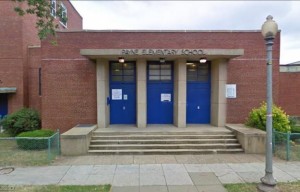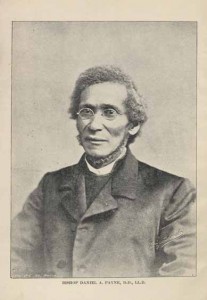So much of Washington, DC’s history is bound in the inexorable discussion of race, and our schools are no different. As no doubt the vast majority of you know, Washington, DC’s schools were segregated for much of our history; both because our Congressional overlords deemed it so and because, frankly, few white residents felt it should be otherwise. And so we maintained two separate, but hardly equal, school systems for nearly a century and a half.
Often, as a white school wore out, a new one would be built for them while the old was turned over to the black students, as my friend Mike detailed in his discussion of Ludlow-Tayor Elementary. However, at times a new school was purpose built for African-American children, and such was the case in my corner of the Hill at Payne Elementary.
Payne was built in 1896 in the standard 8 room layout that still survives elsewhere on the Hill (Maury Elementary is still standing). Fittingly enough, it was named for a quiet but substantial leader in the education of young African-Americans, Bishop Daniel A. Payne. Bishop Payne was born in Charleston, SC in 1811, a free child born of free parents. Although a resident in a slave holding state, he enjoyed what was for blacks a privileged upbringing, opening a school at age 18. However, following Nat Turner’s slave rebellion, the thin sliver of space between black slave and free white disappeared in the southern states, and Daniel Payne found his position as a schoolteacher untenable.
He moved north, briefly attended a Lutheran Seminary in, of all places, Gettysburg, Pa, and eventually settled in Ohio. Becoming involved in the growing African Methodist Episcopal Church, Danial was selected as the sixth Bishop of that faith. Working both with other members of the AME Church as well as white Methodist Episcopals (including Lincoln’s future Secretary of Treasury, Salmon Chase), Payne helped found Wilberforce University, the Nation’s oldest private African-American University. As the Civil War started and the school foundered, Bishop Payne arranged for his church and the state of Ohio to rescue the University and it continues to educate students to this day thanks to Bishop Payne.
Daniel Payne died on November 2nd, 1893, and was laid to rest just north of us in Baltimore. Perhaps in recognition of his years of work, and with his passing still on peoples minds, the Board of Trustees of the Public Schools voted in July of 1896 to name the new “colored public school building at the southeast corner of fifteenth and C streets, southeast” for Bishop Payne.
It is perhaps ironic that the next time Payne Elementary would appear prominently in the world at large would be in a series of parent strikes from 1951 to 1953. As white flight started to take hold in post-war Washington, and the African-American population was on the rise, many black schools became increasingly overcrowded while white ones sat nearly empty. Despite the empty classrooms in nearby Bryan and Buchanan schools, the school system’s response in 1953 was to put partitions up in Payne’s auditorium and convert the space to four “classrooms”. With over 800 students attending Payne, administrators were somewhat surprised parents were still not satisfied that class size was down to “almost 40” students, from the previous high of 44. Maybe that’s why they threatened parents with legal action rather than finding adequate space for the kids.
These immediate problems were ameliorated when desegregation was handed down in 1954, and perhaps Payne gets the last laugh. He’s still educating young minds while Bryan School has been turned into condos and Buchanan is mostly vacant.



Payne was the first African-American to receive his theological education in a Lutheran seminary.
The seminary, still active, was the site of Civil War conflict, especially on the first day of the battle of Gettysburg. Seminary Ridge, running south from the Lutheran seminary, was the base of most Confederate operations, serving as the launch site for the Confederate attacks against the peach orchard, Devil’s Den, and Little Round Top. Pickett’s Charge was a long walk across open ground from Seminary Ridge to Cemetery Ridge.
There is some.. what, irony maybe?… that according to a tour guide on one of the DC Preservation Leagues endangered places tours a few years back… for at least a brief shiny point in time the quality of education was probably better in the black system than anywhere else. If you were black and had managed to work your way up higher education, you’d finish up and there would be next to know career opportunities available to you. Therefore, many of the teachers in the black system held PhD and other advanced degrees in their field.
Not sure of the time frame or how long it lasted, or what if anything it symbolizes, but it’s always seemed like a striking display of how inequities play out.